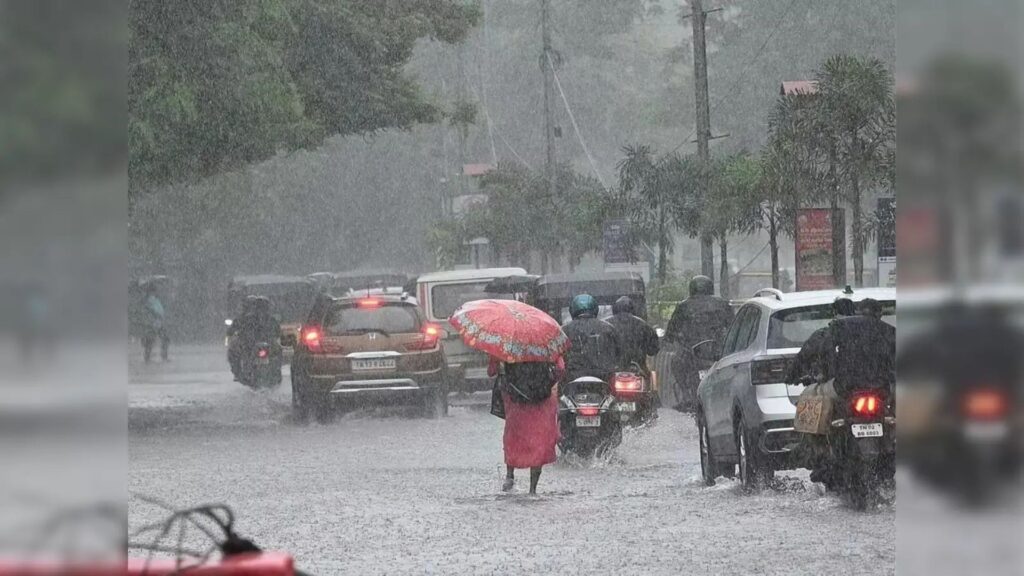The southwest monsoon is likely to reach Delhi within the next two days, with the India Meteorological Department (IMD) forecasting light to moderate rainfall and an improvement in weather conditions. A yellow alert has been issued for the national capital and nearby regions until Tuesday, with warnings of thunderstorms and gusty winds reaching speeds of up to 50 kmph.
According to IMD, conditions remain favourable for the monsoon’s further advance across northern and northwestern parts of the country. Heavy rainfall is expected over large swathes of these regions over the next 72 hours, aided by increased moisture and favourable atmospheric patterns. The monsoon has already advanced into most parts of Himachal Pradesh, the entire Ladakh and Kashmir region, most of Jammu, and parts of Punjab.
“The Northern Limit of Monsoon now stretches across Jaipur, Agra, Rampur, Dehradun, Shimla, Pathankot, and Jammu,” said RK Jenamani, senior meteorologist at IMD. “The system is expected to move further into Delhi, Haryana, Punjab, western Uttar Pradesh, and remaining parts of Himachal Pradesh and Rajasthan over the next two days.”
Despite the rain forecast beginning Sunday, the national capital recorded no significant precipitation until late evening. However, sporadic showers and surface-level winds helped continue a positive trend in air quality.
Sunday marked the fifth consecutive day of “satisfactory” air quality in Delhi. At 4 PM, the city’s Air Quality Index (AQI) was recorded at 92. Cleaner air was attributed to both the improved weather and strict pollution control measures. Punjabi Bagh reported the best air quality among major locations, with an AQI of just 62.
The Delhi government highlighted active enforcement as a key factor in the AQI improvement. In the last 24 hours alone, 211 old or end-of-life vehicles — petrol vehicles older than 15 years and diesel vehicles older than 10 years — were impounded. Additionally, over 11,000 pollution challans were issued across the city.
“Strict action on outdated vehicles and focused field monitoring are yielding measurable outcomes,” said Environment Minister Manjinder Singh Sirsa. “From overall citywide gains to local achievements like Punjabi Bagh, Delhi is making real progress towards cleaner air.”
On the temperature front, Delhi witnessed a partly cloudy sky on Sunday, contributing to a slight drop in daytime heat. The Safdarjung observatory recorded a maximum temperature of 36.2°C, two degrees below the seasonal average, and a minimum of 28.4°C.
Despite this dip, high humidity levels drove the heat index, or “feels-like” temperature, to 47.5°C. The IMD predicts further relief in the coming days, with maximum temperatures expected to range between 33°C and 35°C on Monday, and a likelihood of evening showers.

